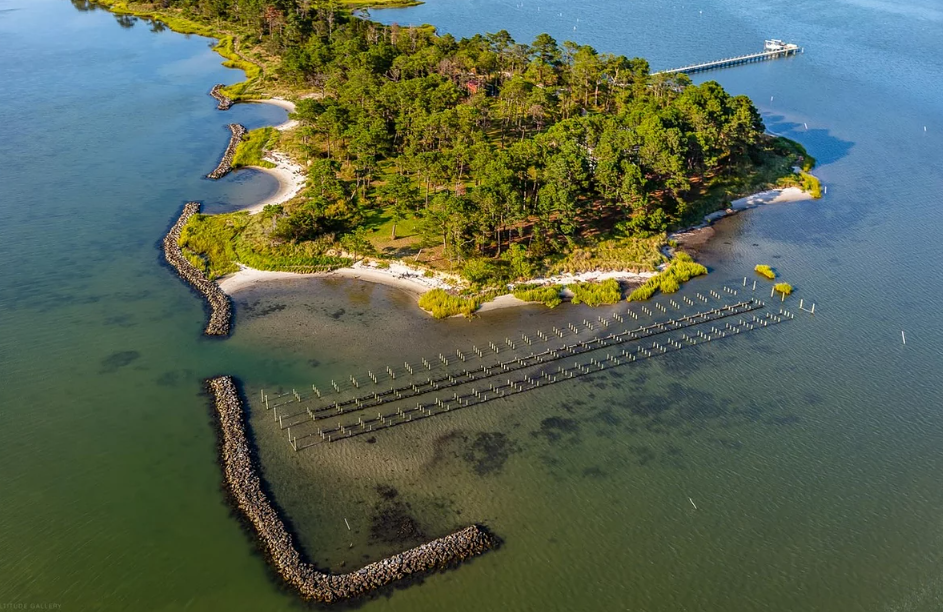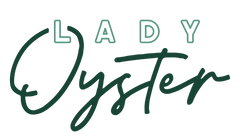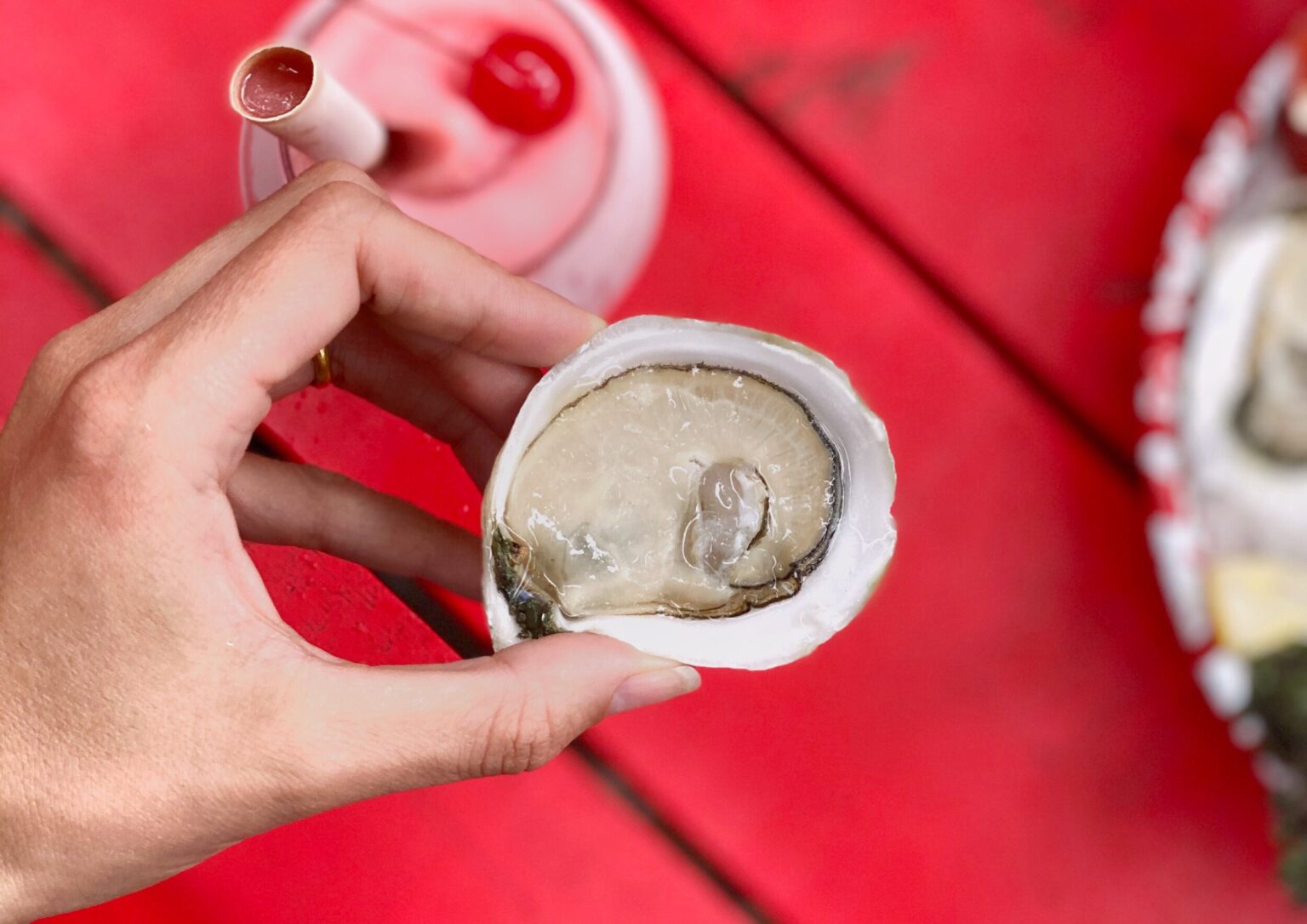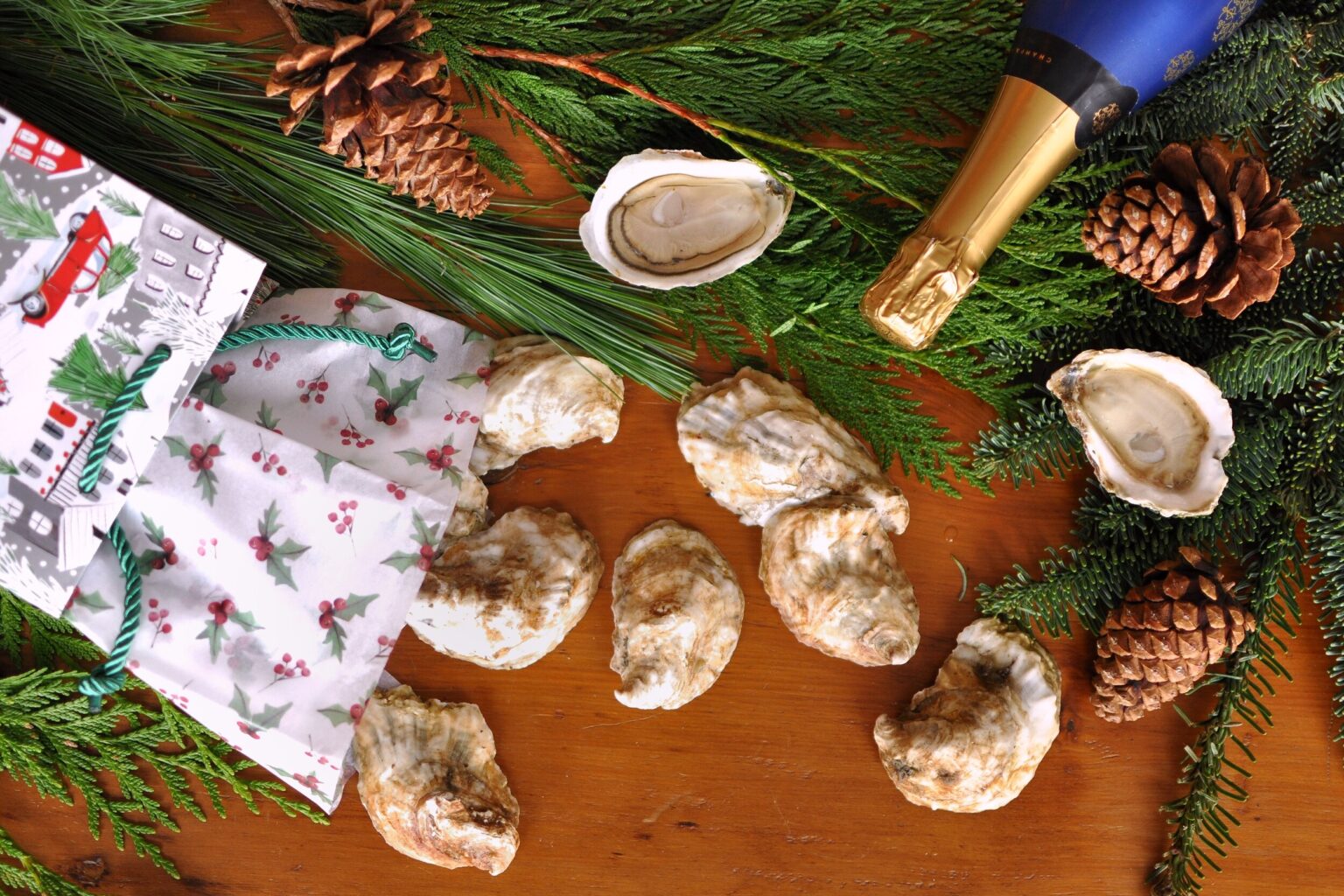From PwC to the Joys of the Sea: The Story of Lambert Shellfish

I think we all know by now that oyster farming is not for the faint of heart. It’s a labor of love that takes a lot of courage, really thick skin (mostly to keep warm), a passion of place, and a plan. I began reading Alex Lambert’s recount of how he redirected his future from corporate life to waders and cages, and I knew early on that this would be a special story to share.
This year has forced many of us to reconsider if we’re truly fulfilled in our jobs, our hobbies, and where we call home. Whether you’re dreaming of a change or you’ve been pushed to reevaluate the status-quo, I want you to read this. Alex took his own chance in 2018 to start Lambert Shellfish, but he put a lot of work into making it a reality. With determination and planning, it’s possible to do what you love – and it really matters that you do just that.
Lambert Shellfish oysters are located in Hungars Creek, Virginia, which is near the southernmost tip of the Eastern Shore. This one hits close to home (no pun intended!) as I was born in Easton, just north on the Shore! I’m so excited to share it.
Here is Alex Lambert’s story.
VIRGINIA: I see that you were a former PwC Auditor! Tell me about the journey from the corporate world to oysters, and what inspired you to change careers.
Alex: My family got this property in [Hungars Creek] in 2013. At the time I was majoring in accounting at Fordham University, and I didn’t know anything about aquaculture. But when we started spending time here, I’d watch the local watermen out our back windows, and just sort of became intrigued. I didn’t know what they were doing (or what the differences were between crabbers, clam farmers, oyster farmers, etc.) so I just started YouTubing aquaculture videos, which led to reading articles, and then books (Rowan Jacobsen’s “A Geography of Oysters” was the first oyster book I read, and it just blew my mind – all of the different ways of farming, locations, taste profiles, history, etc.).
From there, I was hooked – a lot of my free time, whether in the Fordham Library, or even just relaxing back at my apartment, I’d watch whatever videos I could find on YouTube (and re-watched many of them!), read blogs (discovered Julie Qiu, and learned a lot through Chesapeake Oyster Company’s blog) and yeah it just started snowballing, little by little, until I eventually worked up enough courage to give it a try ourselves in the summer of 2016 (I bought some seed and equipment from Chesapeake Oyster Company over in Wake, VA, and “planted” them under our dock here at the house).
I’d started full time with PwC in October 2015, and was putting in the time/energy in, but the more I put into it, I think the more I realized that that sort of life wasn’t for me. I felt increasingly less fulfilled as time went on, and really felt empty when I finally got the coveted senior associate promotion in the summer of 2018. I took a sabbatical that summer, and earlier that year I’d made plans to move from the NY office to the DC office when I returned, so I could be closer to the house here on the Eastern Shore, so I could start a sort of weekend oyster business.
But when I joined the DC Metro office, it quickly became clear that it was not going to be any better than New York (the turnover rate, and horror stories from the younger experienced associates, etc. seemed even worse than my experience in New York to be honest). So throughout that Fall of 2018, after doing a lot of reflection and talking with my parents, I realized that if I continued down this path, I’d be increasingly less healthy/happy, I wouldn’t be a good employee at PwC, nor would I make much progress on the oyster business. So I decided to leave PwC in January of 2019, and moved down here full time to devote all of my time and energy to this dream/operation.
VIRGINIA: What’s so special about the Hungars Creek area? How does the area’s ecology contribute to your oysters?
Alex: We’re located right at the mouth (on the North side), so I like to think we get “first dibs” on the algae coming into the Creek twice a day. Apparently we have some of the strongest/most consistent grass beds (eel and widgeon) in all of Virginia, so I think to some degree that tells a story that we’re located in a strong/healthy ecosystem. Even though I don’t fish much, there’s apparently great fishing around our property (on the Bay side and the Creek side). There’s loads of life: it’s not uncommon to see thousands of fiddler crabs roaming the shorelines in the warmer months, waterfowl in the cooler months, etc. To be honest I’d like to learn more about how this area’s “subaqueous bottom” (we have a sandy hard bottom in some areas, and more muddy in other areas) contributes to our oysters’ taste profiles (I think they have a sort cream of mushroom “umami” taste; maybe that’s due in part to the amount of grasses in the area?). For the Bay, our salinity levels are some of the highest (on average between 20-25 ppt) so that definitely helps give our oysters a better chance of surviving those extreme rainy seasons like last Spring.
VIRGINIA: Tell us more about your farming techniques. What’s your process and what kind of gear are you using?
Alex: We get our seed at 2mm from Ward Oyster Company in early June. We’ll start them in our Hoopers Island tank upweller (grade them up to larger screen silos on a weekly basis), then after about 6-8 weeks, once the seed has gotten up to about 5mm, we’ll move the seed into Seapa seed baskets, and let them start to cup/strengthen up for another 6-8 weeks. Then we’ll move them into 6mm Intermas bags/ Ketcham Supply ground cages, which we position along our shoreline, in an intertidal zone (where they’re out of the water for about half the day, mirroring our longlines).
In the winter, we move these seed cages into deeper water to protect them from the periods of extreme low tide/steady northwest winds. Then in the spring we move them back to the shoreline, grade them again, move them into larger 10mm bags/ground cages, and we finish them in our new adjustable longline farm (right now we’re using used Seapa baskets we purchased from a local operation that wasn’t using them). We’re currently operating at about 50% capacity on the longline farm (only have 6 of the potential 12 lines up, and filled with baskets/oysters), but we plan to be operating at 100% capacity come next Spring.
It’s this final stage, a sort of 2-3 month boot camp, that stresses the oysters before final harvest, resulting in a stronger shell and a better meat-to-shell ratio. They’re essentially working out all day long, and are fasting/gorging twice a day.
Our 3-piece tumbler set is also from Hoopers Island (can’t say enough good things about their team of engineers – we’re lucky to have them just a short 2 hour drive “up the road” from us!)
V: I noticed that you’re committed to environmentally friendly shipping materials, which is even one step further in keeping your impact low. Can you tell us about that?
Alex: Absolutely. So I started getting Blue Apron food delivery when I was in New York, and that was my introduction into that sort of cold chain packaging/delivery. It was only recently that I learned that those insulated bag liners aren’t actually recyclable. Or, if they are, it’s a sort of situation where you need to bring them to a special site, for them to pick it back up, etc. And it’s like yeah, who really has the time to actually do that? So earlier this year I started browsing around the internet, saw a few promising new companies developing more environmentally friendly packaging options, but I ultimately decided to go with Nature-Pack, which is a subsidiary of Frontier Packaging, which is based in Indianapolis, and has been around for I think 30 years. Their website stood out to me, because they actually go a step further, for example, defining what it actually means to be biodegrable/compostable (has to fully integrate into soil within 6 months), and their boxes are actually certified (by an independent European body) to be eco-friendly (the insulated liners are made of something like 82% corn starch). So I started talking with them, they sent a sample, and after getting an SBA loan (through the economic injury disaster loan program), we decided to go for it, to try and differentiate ourselves a bit from other operations, and to try and “push the dial” in the right direction. It’s not a perfect box/situation, but it’s exciting to at least be trying to do things “a better way.”
V: What do you love about oyster farming? What do you think is the most challenging part of this business?
Alex: I love being here at the house, getting to work along our shorelines, and in a small way, make this incredibly special area a little bit better. I honestly love sharing our story on Instagram, with friends, and neighbors, and getting people’s feedback. Just last night we had our first community oyster roast and I gave several farm tours. It’s pretty surreal to be able to come to a place like the Eastern Shore, that has so much aquaculture history, and introduce a “new” method of growing oysters. While the adjustable longline system is 20 years old, it’s still pretty uncommon here in the Chesapeake area, so that’s definitely exciting being one of the first operations using it. And I think I have a bit of the entrepreneurial bug, where I just like dreaming of “what comes next” and working bit by bit towards making it a reality.
I think the most challenging part right now is probably selling/making new customers, especially now during a pandemic, and being primarily a one-man operation. There’s loads of support, and we’re so lucky to have friends down in Virginia Beach that are helping spread the word to restaurants and others, but it still takes a long time to crack into new places. We’ve started shipping oysters down to some friends who have a wholesale seafood business in Georgia on LD Amory trucks, and last week we finally started using Sam Rust as another wholesale distributor, so we’re making some progress, but with the pandemic and markets being slow, we currently don’t have the Cherrystone option we had last year. It was super convenient having them down the road; they have one of the largest shellfish distributions in the country, so they could easily take a few thousand from us on a weekly basis; hopefully we can return to working with them again soon.
Also, yeah, being a one man operation at the start is a bit tiring. While I like doing most of the different tasks, and learning to do each better, it’s also a lot of work, changing hats, and juggling different to-do items, what I’ve started referring to as “shepherding” the different vendors/contractors/etc. to keep things moving in the right direction.
V: As a self-starter, is there any advice you would like to give to other passionate people looking to embark into the oyster business?
Alex: Do your homework, start small, make mistakes, ask for help, and repeat! The past two years I’ve felt incredibly lucky with the amount of help I’ve received from so many different people from all over, but especially here on the Shore (some folks that their families have been here for centuries(!), and really I wouldn’t expect them to want to help some new “Yankee” kid like me). But I think often times when I finally meet people, and ask for their help, they can quickly pick up my passion, and the homework I’ve done, so I think that helps. But eventually you have to get your hands dirty, you have to close the computer, and start figuring out how to actually do things (there’s only so much you can learn from YouTube videos and read in books). That’s when you have to be persistent, have grit, all of those things, to keep plugging away, and take baby steps towards where you want to go.
V: How would one best describe the flavor profile of your Loving Cups? What’s your favorite pairing?
Alex: Our Loving Cups have a medium salinity (20-25 ppt) and I sometimes taste a sort of cream of mushroom (which I guess is “umami”). While I love a traditional cold Budweiser (I actually think I started drinking it more frequently after reading a part in Rowan’s Geography of Oysters – I remember being like wow, it’s so opposite of “trying to be cool,” that it’s kind of cool, I like that sort of thing; and I just enjoy drinking them haha)
On the other end of the spectrum, my girlfriend Allison is a really big natural wine fan, and over the past few months, natural wine is starting to “blow up” in Virginia Beach, where we spend a lot of time on weekends with friends (The Pink Dinghy is a great new spot, where we’ve done a few events, and they get a lot of their wines through Native Selections which is an importer of natural wines). I know we drink a lot of Martha Stoumen here at the house. And I was really enjoying a Chablis I was drinking the other night when we were down there eating our oysters and hanging out at the Pink Dinghy.
V: How can consumers find or purchase your oysters?
Alex: Our website, LambertShellfish.co is now up and running (we’ll be working out the kinks over the next few weeks!) We’re also up on The Oyster Common ecommerce site. We can ship all over the country using FedEx and our new Nature-Pack boxes. We’re selling to local restaurants here on the Shore and down in Hampton, and will be in more restaurants down in Virginia Beach/Norfolk over the next few months. And we plan on starting to send samples out to some of the bigger raw bars and restaurants in cities up and down the east coast.
V: What is next for the business? Is there anything in particular you are focusing on in the near future?
Alex: We’re pretty excited to announce soon a sort of CSA (community sponsored *aquaculture) where folks can order a monthly 50 count bag and pick them up at a set location/time – we’ve agreed with Gordon Campbell, owner of At Altitude Gallery (one of my favorite businesses here on the Shore – he flies around on this slow moving plan of his and takes these incredible shots from all over the Shore). Anyways, he has one gallery up in Onancock, and another down in Cape Charles, so we’re excited to hopefully start selling our oysters out of these locations, building repeat local interest here on the Eastern Shore. And there are a lot of exciting things “in the pipeline” for next year: completing our longline farm; starting to do more work using biodegrable oyster catcher products to build a living shoreline here; and offering public farm tours and interactive foraging experiences here.
Thank you, Alex, for sharing your experience with us! There’s no doubt that there’s a lot of love in your Loving Cups and Rocky Tops. You can follow Lambert Shellfish’s journey on Instagram at @lambertshellfish and visit their website to buy oysters at www.lambertshellfish.co.










